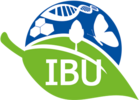Contact
Prof. Dr. Dirk Albach
AG Plant Biodiversity and Evolution
Fak. V: Institute for Biology and Environmental Sciences (IBU)
Carl von Ossietzky Universität Oldenburg
Carl von Ossietzky-Str. 9-11
26111 Oldenburg
Tel.: +49 (0)441 798 3339
Fax: +49 (0)441 71641
Research
Why do we need diversity?
www.researchgate.net/lab/Dirk-Albach-Lab
Evolution needs diversity. Only if nature can select between different organisms, evolutionary change can happen. And change is necessary – to adapt to new habitats and/or climate change. Mankind depends on biological and genetic diversity to breed improved crop plants.
Hybridization between species is a natural possibility of organisms to adapt faster to new circumstances. Mankind makes use of this for centuries by crossing different plant species.
Polyploidy is a special kind of hybridization in which parents do not provide offspring with a single set of chromosomes but with a double set of chromosomes. This has a variety of advantages such as increased fertility, stronger growth but also many other aspects.
Diversity of polyploid species
Polyploids unite the complete two sets of both parents. Apart from increased fertility and stronger growth, this offers evolution a large playground, in which single alleles and loci can change faster or get lost. There is always a backup. On the other hand, additional copies bind a lot of resources. Is it an advantage, therefore, when DNA gets lost from the genome after polyploidization? We have already shown that to be the case in the genus Veronica. Can this also be part of the reason for the success in species proliferation of the large genus Rhododendron? Does this phenomenon play a role in the diversification of some genera of New Zealand plants?
Diversity of crop plants
For breeding new apple cultivars, it is necessary to know the pedigree of the cultivars to avoid crossing close relatives and reduce the genetic diversity of the apples. Genetic diversity means using the whole potential of apple to breeding pest resistant cultivars – without genetic modification.
Preservation of genetic diversity is likewise essential for trifoliate yams and improvement of this crop, which is an important food and medicinal plant in western and central Africa.
Kale is a highly traditional crop plant in northwestern Germany and a hype-plant in the United States but still its diversity is hardly known. Crossing of different types of kales and other types of cabbages allows breeding new crops with traits important for agriculture and medicine.
White clover is often the only remaining plant interesting for insects in pasture lands of northwestern Germany, the Netherlands and adjacent regions. Breeding for high biomass and reduced secondary metabolites has negatively affected traits important for insects. We are, therefore, interested in which cultivars are most interesting for insects and do combinations of different cultivars improve the situation.
Polyploidy plays an important role in crop plants. How can we use polyploidy in crop plants for the use of mankind?
Diversity in the salt marshes
The northern German Wadden Sea is a World Natural Heritage and national park. However, the diversity of species is so far insufficiently known. Especially interactions between species, which need to be known for conservation of the ecosystem, will need to be better understood. Questions in our research in the DFG-research unit DynaCom are: Which role does polyploidy play in the adaptation of plants to high salt concentration? Is interaction with fungi essential for survival of plants in the salt marsh? Are micro-organisms adapted to small or large ecological niches and what does that mean for dispersal and colonization patterns? Which distribution area doe litoral and pelagial micro-organisms have?
Detecting and describing diversity
Only a small part of the global species diversity has so far been described. Even among flowering plants new species are described constantly. With an emphasis on the genus Veronica and South American gentians, we document and describe evolutionary relationships among species. For that purpose, a diversity of methods is essential. In our research group we work in the herbarium, use various microscopes (light, fluorescent, scanning electron microscopy), study plants in nature, in common garden environments and in climate chambers with controlled environment. In the laboratory we work with flow cytometry and DNA-/RNA-sequencing methods. We sequence using Sanger- and RAD-seq methods, use SNP-arrays as well as transcriptomics and whole genome sequencing. We have also established metagenome sequencing of fungi and bacterial communities.

